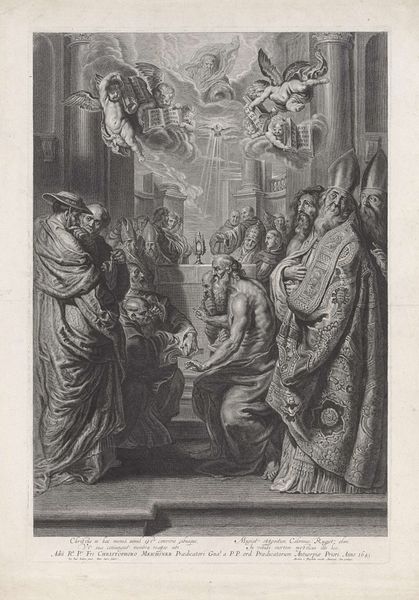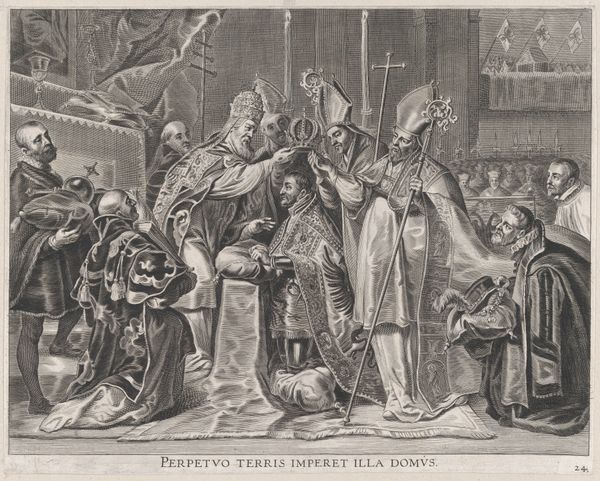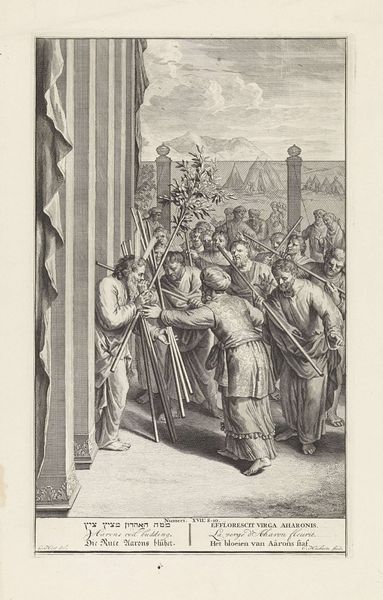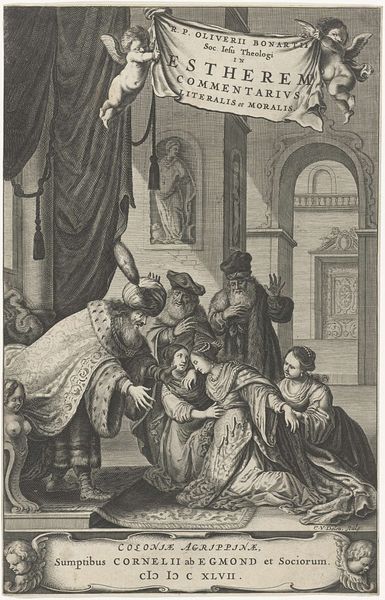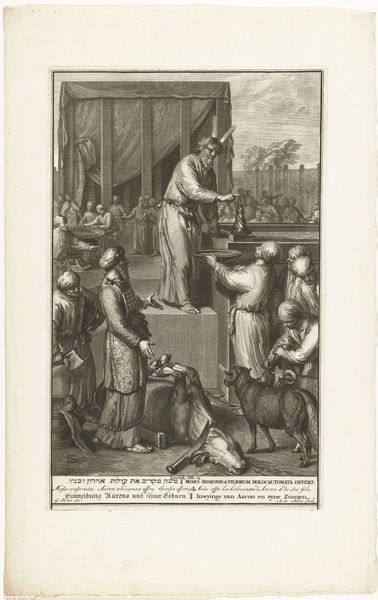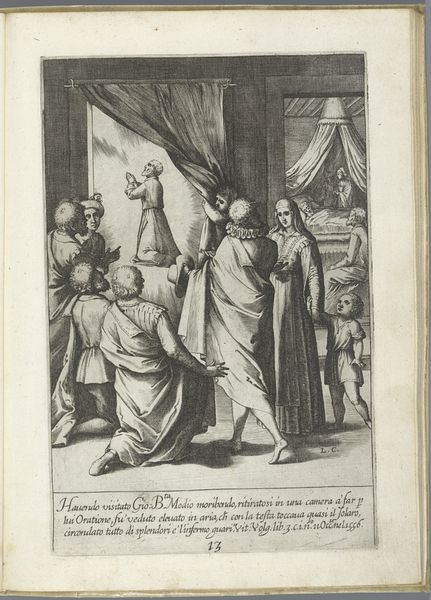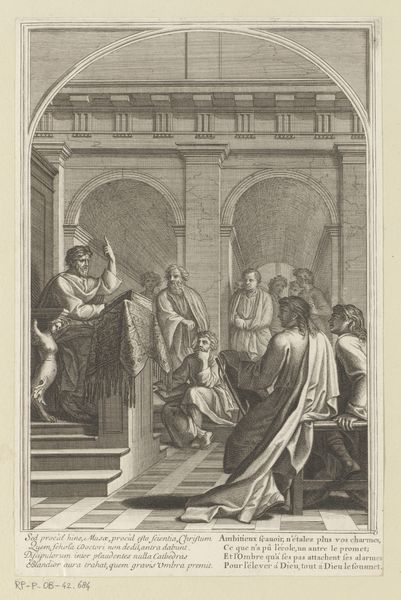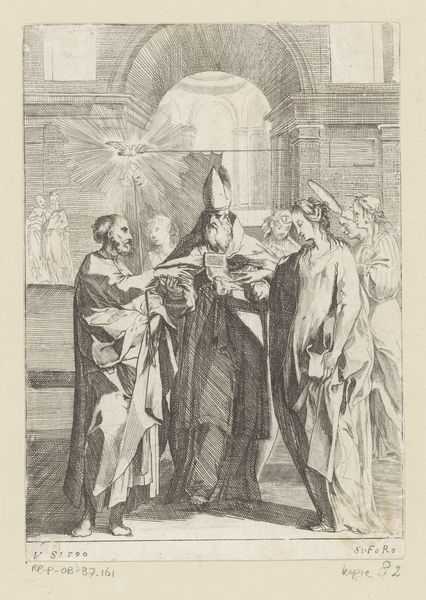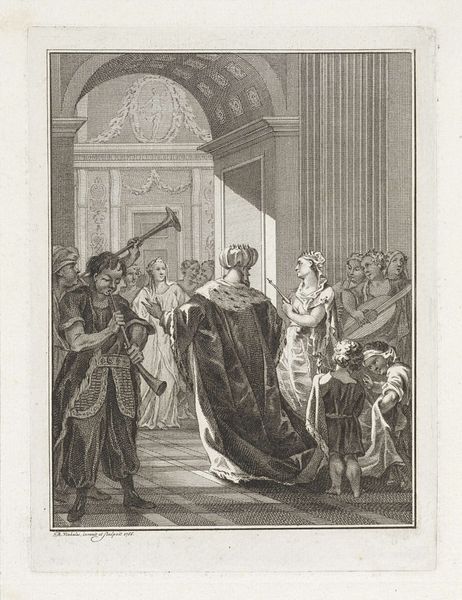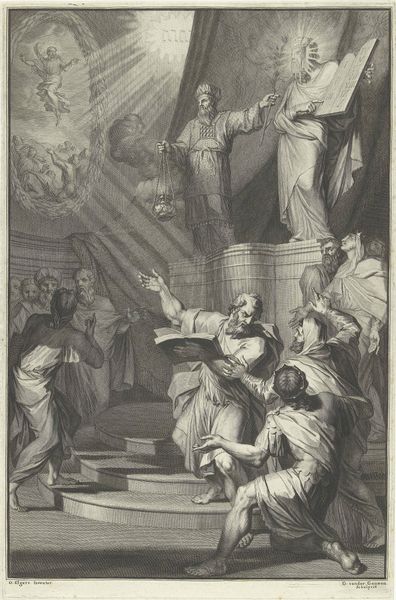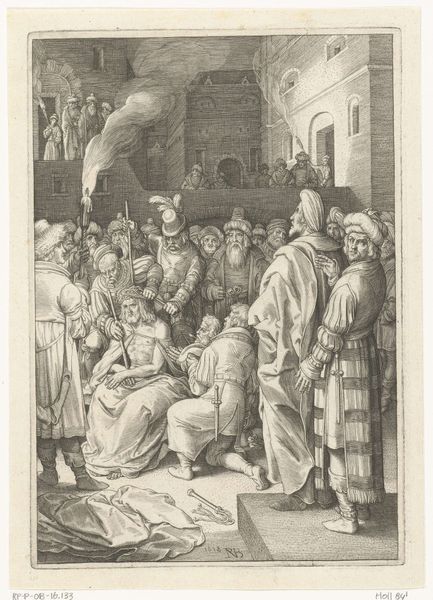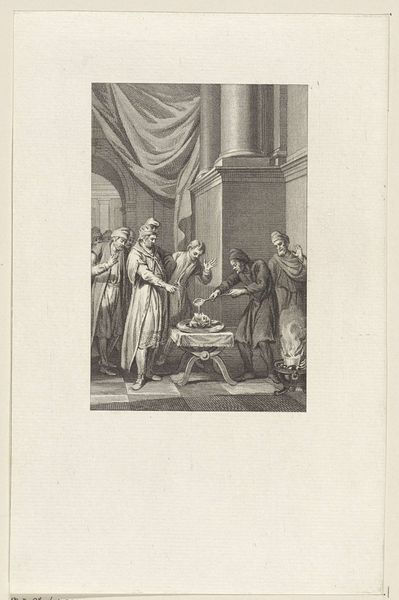
engraving
#
baroque
#
figuration
#
history-painting
#
engraving
Dimensions: height 336 mm, width 220 mm
Copyright: Rijks Museum: Open Domain
François Chauveau created "Raymond Diocrès kondigt zijn verdoemenis aan" using etching, a printmaking technique, sometime in the 17th century. Here, we see the distinctive characteristics of etching, where the artist employs a metal plate covered with a waxy ground and then draws into it with a needle. The plate is then bathed in acid, which bites into the metal where the ground has been removed, creating lines that hold ink. The soft, textured lines that define the figures and the architecture are a signature of the etching process, allowing for fine detail and tonal variations. Etching allowed for the relatively quick reproduction of images, serving a growing market for accessible art. This print would have been part of a larger visual culture, in which religious and moral themes were disseminated among a wider audience, reflecting the social values and moral teachings of the time. This challenges the traditional boundaries between craft and fine art. It demonstrates that the means of production are central to understanding its cultural significance.
Comments
No comments
Be the first to comment and join the conversation on the ultimate creative platform.
